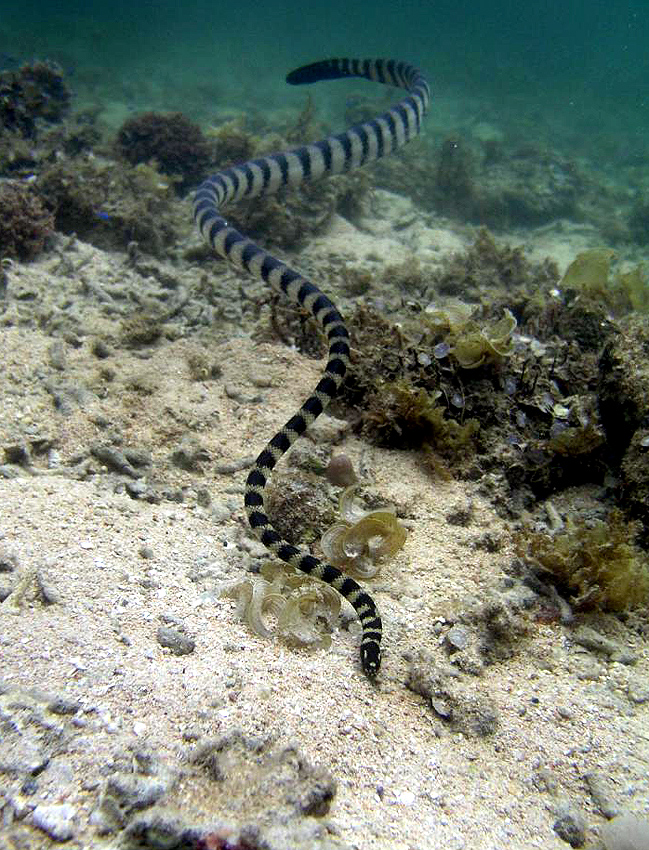Shrunken Heads of Sea Snakes Explained

Some sea snakes have heads that look comically small compared with the rest of their body. New research shows these shrunken heads evolved quite rapidly, allowing the snakes to hunt eels hiding in tight spaces.
If you only looked at the genes of the blue-banded sea snake and the slender-necked sea snake, the two species would seem nearly identical. But the close cousins, which are found in waters around Southeast Asia and Australia, have quite different physical looks, researchers say.
"The slender-necked sea snake is half the size, and has a much smaller head, than the blue-banded sea snake," study researcher Mike Lee, from the South Australian Museum, said in a statement. "This suggested they separated very recently from a common ancestral species and had rapidly evolved their different appearances."
The researchers believe some sea snakes developed shrunken heads to be more effective eaters since these species poke their heads into narrow eel burrows to look for food, whereas their big-headed cousins feast on crevice-sheltering eels and gobies.
"One way this could have happened is if the ancestral species was large-headed, and a population rapidly evolved small heads to probe eel burrows — and subsequently stopped interbreeding with the large-headed forms," Lee added.
Both the blue-banded sea snake and the slender-necked sea snake belong to the genus Hydrophis. With more than 30 species, this group is by far the most diverse group in the Hydrophiinae subfamily and it has a lot of tiny-headed members. In fact, microcephaly (the condition of having a small head) has evolved at least eight separate times in Hydrophis during their relatively rapid diversification over the past 3.5 million years, researchers say.
Meanwhile, no other genus in the sea snake family (not Aipysurusnor Ephalophis nor Hydrelaps) has snakes that have evolved shrunken heads. What's more, these groups tend to be much less diverse, each represented by a half-dozen species at best.
Get the world’s most fascinating discoveries delivered straight to your inbox.
"Rapid evolution of head size variation is therefore a likely contributing factor in the explosive speciation in Hydrophis group sea snakes," the researchers wrote in an article published this week in the journal Molecular Ecology.
Follow Megan Gannon @meganigannon. Follow us @livescience, Facebook & Google+. Original article on LiveScience.com.



